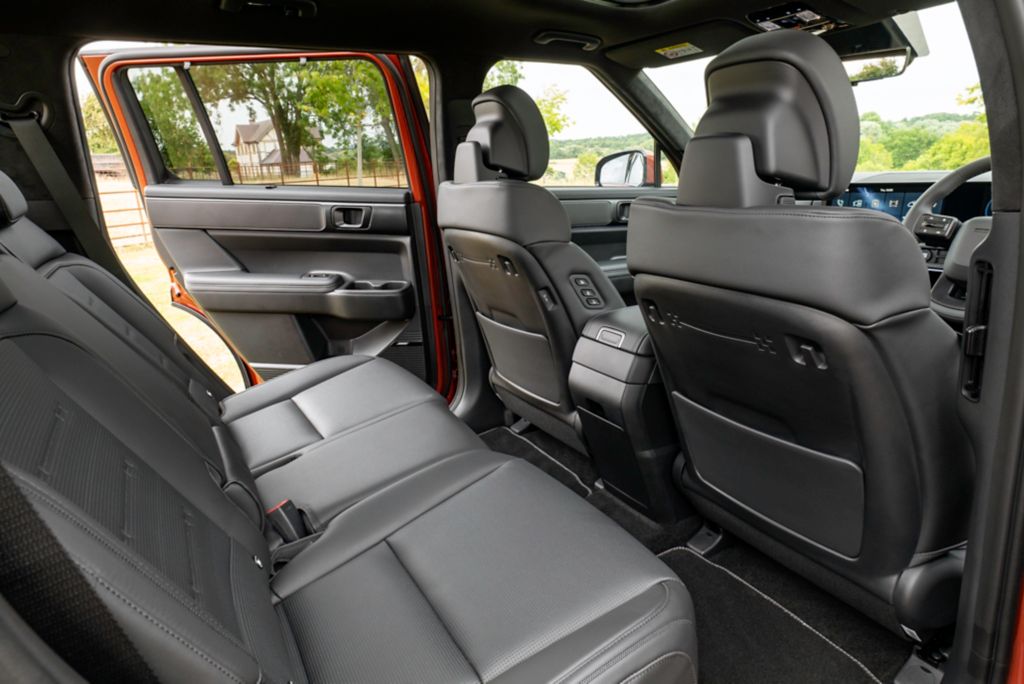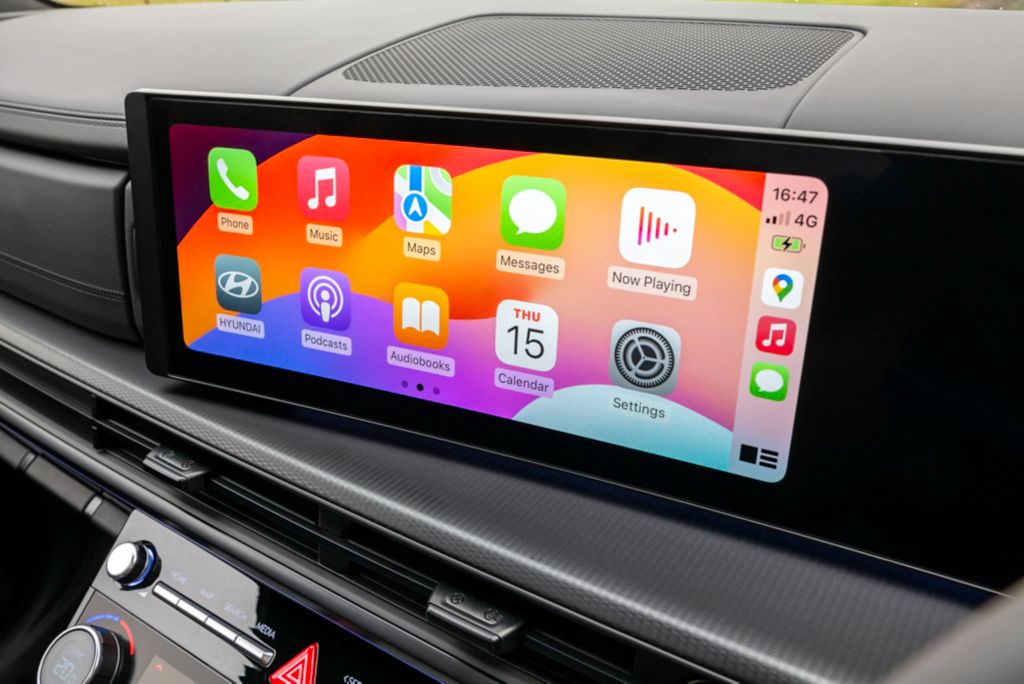You have to hand it to Hyundai – they are going through a purple patch at the moment. Everything their designers have penned over the past 18 to 24 months, it makes mainstream and some premium rivals seem, well, bland and uninspiring.
The fully-electric Ioniq 5 SUV (stylish, comfortable, practical) got the ball rolling before it was joined by the equally if not marginally better battery-powered Ioniq 6 saloon (good looking, class-leading range and ultra-fast charging as standard). And now they have come up with this: a petrol-electric-powered Santa Fe that can be had with six or seven seats.
The best place to start with this new SUV is the way it looks. There is no getting away from the fact that, side-on, there is more than a whiff of Land Rover about it – notably the latest Defender 110 because of the huge space between the front and rear axles, and that long overhang at the squared-off rear end.
Cyberpunk looks and some out-there colours – brown, orange and green to name but three – ensure it catches plenty of attention on the move and that is before you see it parked up. At 4830mm long and 1900mm wide, it is 45mm longer than before, so the Santa Fe is no shrinking violet. In truth, it almost wants to make a song and dance and be the topic of discussion, and how could it not be with those standout ‘H-shaped’ DRLs, and 20-inch alloy wheels that are housed within over-sized wheel-arches?
Customers have a choice of three models: ‘Premium’ (£51,885), ‘Ultimate’ (£55,135) as tested here, and ‘Calligraphy’ (£57,635). Even entry spec versions are not light on standard kit as wireless phone charging, a bright and crisp 12.3-inch touchscreen, heated front chairs, keyless start/stop and dual zone climate control are a few of the perks. You add a second 12.3-inch driver’s display that merges into the identical-sized multimedia unit to create one wide panel in ‘Ultimate’, as well as a head-up display, a Bose stereo, and a surround view monitor that helps in tight spaces.
If you have money to burn, the most expensive Santa Fe adds wireless Apple CarPlay and Android Auto, Nappa leather, and a ‘Black Finish’ styling pack that consists of a smoked skid plate, and dark accents for the bumpers and doors. One quirk is a UV-C sanitisation bay on the passenger side of the dashboard – a first for any car, so says Hyundai. Pop your smartphone, wallet or sunglasses into this and at the touch of a button a 10-minute process begins to remove any harmful bacteria that might exist on the surface of these. Clever stuff.




The inside itself is another triumph for Hyundai. Open the weighty driver’s or front passenger door and it looks – and feels – special. Few vehicles at this price point can usurp it given how practical and airy it, while quality is mostly on point thanks to the generous application of soft-touch materials.
The onboard technology is a joy to use and the decision to introduce a second control panel beneath the multimedia screen is a feature many are going to welcome. Intuitive and quick to respond to prompts, there are also decent-sized shortcut buttons that take you to the home screen, sat-nav, radio and parking camera. There’s also separate rotary dials for those in the front to adjust cabin temperature.
As a sign of how quickly the landscape is changing with the newest new cars, Hyundai no longer sells the Santa Fe in five-seat configuration, so it is either the standard 2+3+2 layout or the more expensive 2+2+2 formation in, you guessed it, the more expensive ‘Calligraphy’. In six- and seven-seat guise, everyone gets their own USB-C charging point, while the extra seat means the middle bench row can move forwards/backwards to offer more leg room if those rearmost seats are not in use.
As for boot space, with the two seats in the third row folded down there is 985-litres to play with in plug-in hybrid versions compared with 992-litres for the regular, self-charging hybrid – or 621-litres if these are in place. Either way, that is pretty capacious. Other thoughtful touches that show attention to detail include a mains voltage socket which is accessed via a wide-opening – and electrically operated – boot.
Thought has also been paid to how the Santa Fe rides and steers on British roads. The family car handles its bulk remarkably well and it is as easy to place on the road and manoeuvre in a busy Saturday car park as its more compact i10 sibling. There’s a degree of play in the coil sprung suspension that induces roll through corners, with the payback being a nicely cushioned ride that mops up road imperfections and bumps with minimal fuss at low speeds.
On the larger wheels and at higher speeds things can occasionally turn a little unsettled, however, on the whole, it is a refined and relaxing cruiser. As for what nestles under the long bonnet, we sampled the 1.6-litre, four-cylinder turbocharged petrol hybrid that sent its power to all four corners via a smooth six-speed automatic for a 0-62mph time of 9.5 seconds and a top speed just shy of 120mph. In plug-in electric guise, the same engine is paired to a 96bhp electric motor for a combined output of 249bhp and a quicker 0-62mph time of 9.3 seconds. Topped up, the 13.8kW onboard battery promises zero emissions driving of up to thirty-three miles – comparatively short as opposed to Toyota’s RAV4 PHEV (47-miles) Peugeot’s 5008 PHEV (48-miles).









